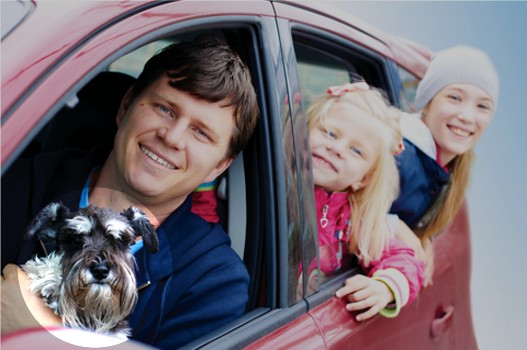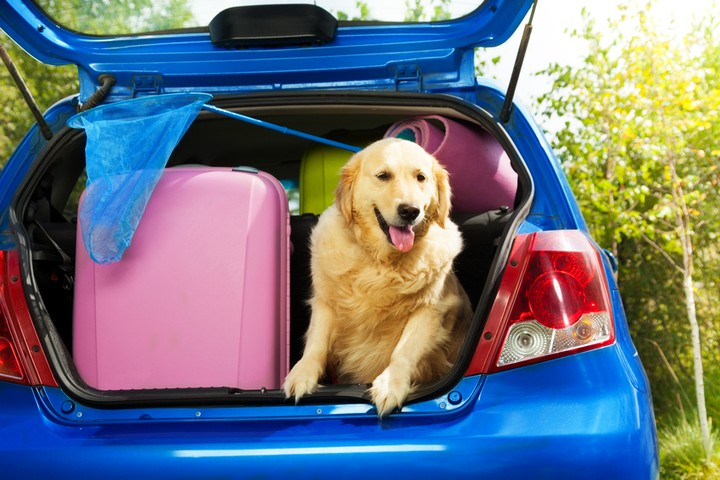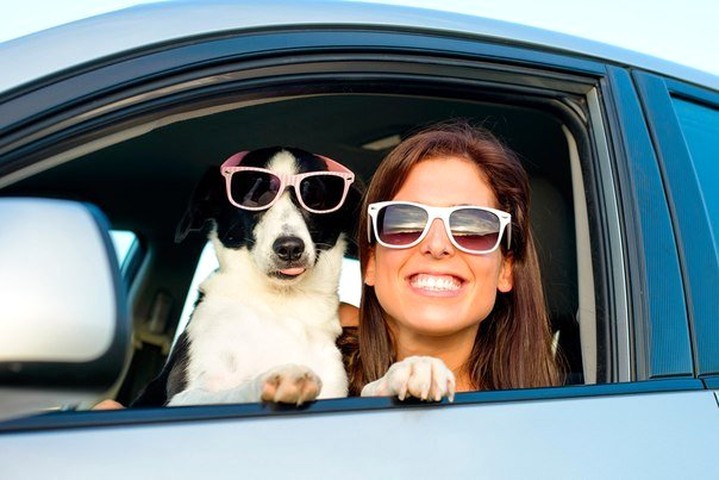5 Tips for traveling by car with your pet

For most owners, dogs, cats and ferrets are not pets; they are full members of their family. They eat rest, walk and have fun together, why not support the idea of leaving them in the care of others when they go on vacation. Why not enjoy a long weekend or a vacation together. But it is not enough to charge them in the car like a suitcase. There are some driver safety rules that must be respected, but we must also ensure their safety and ours. Are you dizzy? How do you hold her? And if we are scare and decide to hide under the brake pedal.
We gather in this article to our five favorite safety tips to make your car trip with your family a more enjoyable experience for everyone.
1. Prepares Trip
If you are traveling by car, sure you've planned ahead, routes, distances, tourist stops. If your pet has not previously been in the vehicle, you should practice before a few shorter trips and observe their reaction. Some animals behave very well, but others suffer from anxiety or even dizziness. If this is the case, discuss with your veterinarian what medications are most appropriate. And make sure it is current with vaccinations.
Most cats and ferrets are more confident in the car when traveling in a crate. If not known, leave the carrier at home a few days before, and open with treats inside. Eventually habituate and feel comfortable and safe inside. Nervous dogs to the carrier is the best alternative, try to come in and feel happy inside, the trip will be more relaxed.
2. Travel Kit

Similarly as when traveling do not forget all the documentation that we may need, you must also prepare your travel kit. In it you must bring your veterinary primer and all documentation that you can include and facilitate the task to another vet. Write your name, address and contact phone number in the carrier, in case there is an emergency. Also, do not forget your first aid kit with medication, antiseptics, brush, nail clippers.
Do not forget the bags to collect their droppings, toys, treats, extra belt and your favorite pillow.
3. Security
If we put the seat belt and they also must insure them. One of the best security options is the carrier that can accommodate rear seat and secured with a seat belt. Some studies suggest that the carrier can break on impact, so it is advisable not to disconnect the airbag if any. Another option is to place the carrier on the floor of the rear seats, but careful with ventilation and heat stroke. On cars with tailgate can be placed in the trunk transversely to march and come in almost every size. Are inadvisable dividing grids while offering freedom of movement, collision can cause serious injuries.
If you prefer to take in the seat is suitable use with a special harness two hooks that is secured with a seat belt, allowing some comfort and freedom of movement. In this case it would be advisable to disconnect the airbag, if your vehicle allows.
When choosing a secure fastening system, you must opt for those that have proven effective and are approved by European standards such as ECE R17 or DIN 75410-2.
4. Physiological needs

For any trip it is important to stop every two hours, so the pet can stretch their legs, relieve themselves, burn excess energy and obviously exploring new territory. The hydration is essential for both the driver and the rest of the family. Instead you have to avoid eating solid, in fact, it is better to feed three to four hours before travel begins to minimize motion sickness.
During the rides never let him out of the vehicle without a leash. In an unknown place animals can behave unpredictably and finish the trip unexpectedly. Always park in the shade, never leave the animal unattended inside the vehicle and remember that in a few minutes it is an oven and can suffer heat stroke.
5. Entertained
Before the trip many pets get excited just seeing the suitcases to the car and just relaxing and sleeping. But on long trips fret and increasingly agitated. You may seem fun to let the dog pull his head out the window, but it is a dangerous practice. Could be hit with an object, and the wind and cold air can cause ear infections and respiratory infections. Very excitable dogs can even jump out the window with the risk to his life.
Instead, bring your favorite toy, candy and other objects that are familiar and serve him entertained and occupied is the best choice.
Hopefully these tips will allow you to enjoy the holidays from the very beginning, just start the vehicle.
